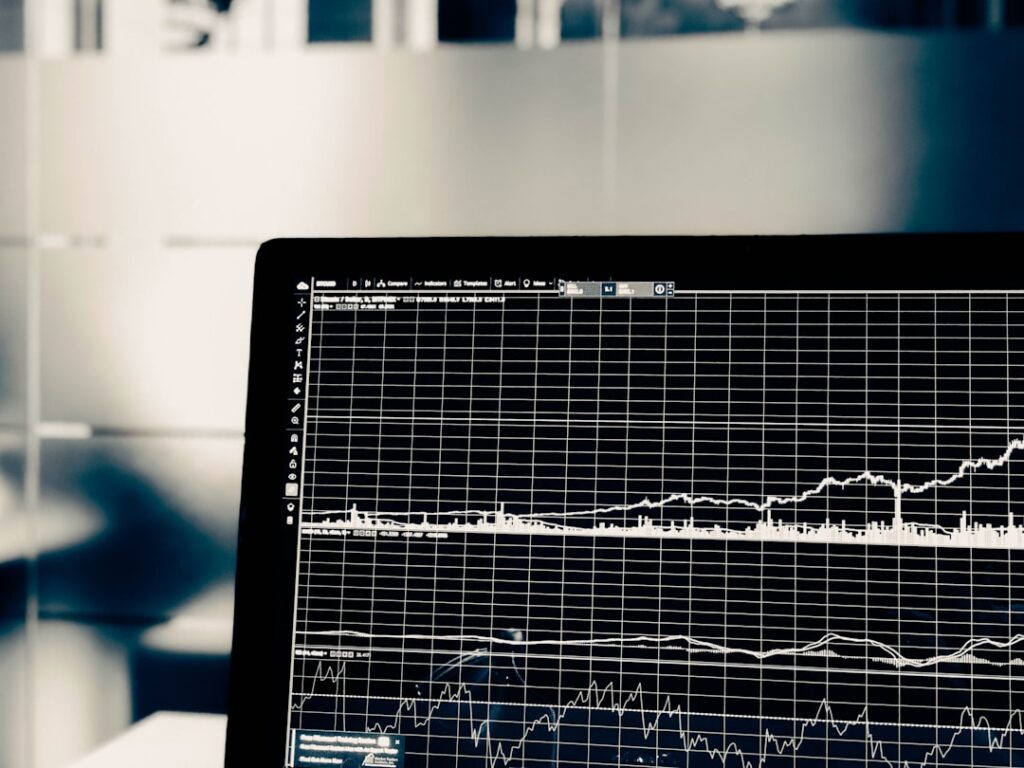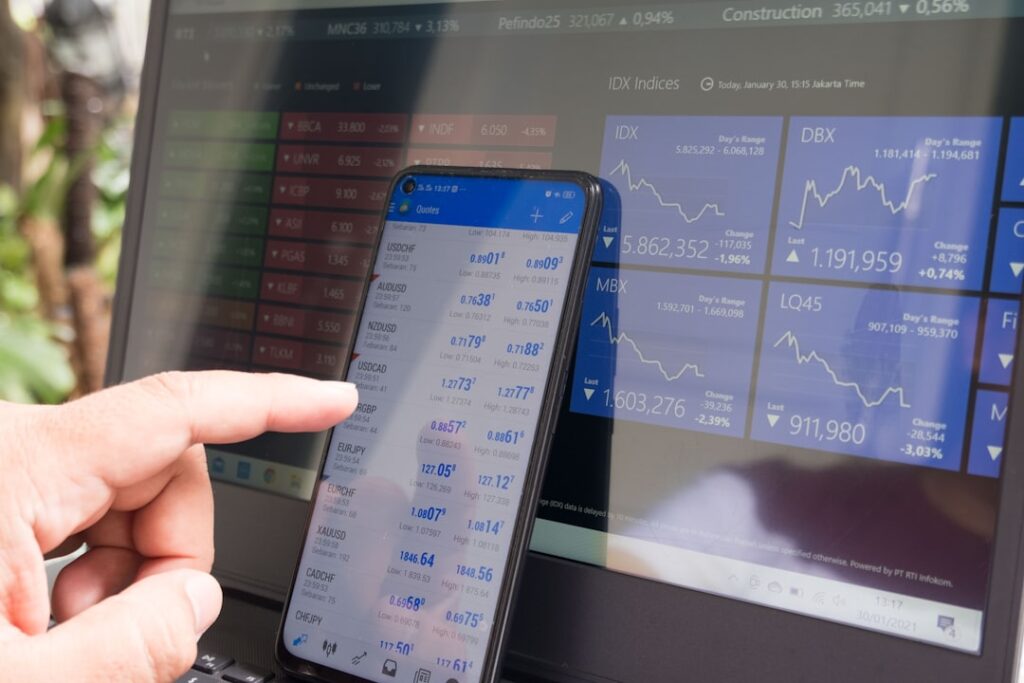Trading systems play a crucial role in the world of stock investment. They are a set of rules and parameters that guide traders in making decisions about when to buy or sell stocks. These systems are designed to take the emotion out of Trading and rely on data and analysis to make informed decisions. By following a trading system, investors can increase their chances of making profitable trades and minimize the risk of losses.
Key Takeaways
- Choosing the right trading system is crucial for successful investment in stocks.
- There are various types of trading systems for stocks, including automated systems.
- Automated trading systems offer advantages such as speed and efficiency, but also have disadvantages such as lack of flexibility.
- When choosing a trading system, factors such as risk tolerance and investment goals should be considered.
- Technical and fundamental analysis play important roles in trading systems, as does effective risk management.
Make $800 a day in less than 30 minutes
The Importance of Choosing the Right Trading System
Choosing the right trading system is essential for successful stock investment. The wrong trading system can lead to poor decision-making, resulting in significant losses. For example, if a trader chooses a trend-following system during a period of market consolidation, they may miss out on potential profits from mean-reversion or breakout strategies. On the other hand, choosing the right trading system can provide numerous benefits. It can help investors identify profitable opportunities, manage risk effectively, and achieve their investment goals.
Types of Trading Systems for Stocks
There are several types of trading systems that investors can choose from, depending on their goals and preferences.
1. Trend-following systems: These systems aim to identify and capitalize on trends in the market. They assume that the price of a stock will continue to move in the same direction as the trend until there is evidence of a reversal. Trend-following systems use indicators such as moving averages and trendlines to determine entry and exit points.
2. Mean-reversion systems: Mean-reversion systems operate on the principle that prices tend to revert to their mean or average over time. These systems look for stocks that have deviated significantly from their average price and bet on them returning to normal levels. Mean-reversion systems often use indicators such as Bollinger Bands or RSI (Relative Strength Index) to identify overbought or oversold conditions.
3. Breakout systems: Breakout systems aim to identify stocks that are breaking out of a trading range or consolidating pattern. These systems look for stocks that have strong momentum and are likely to continue moving in the same direction. Breakout systems often use indicators such as support and resistance levels or volume analysis to identify potential breakouts.
4. Scalping systems: Scalping systems are designed for short-term traders who aim to make quick profits from small price movements. These systems typically involve entering and exiting trades within minutes or seconds. Scalping systems rely on high-frequency trading strategies and often use indicators such as moving averages or tick charts.
Advantages and Disadvantages of Automated Trading Systems
Automated trading systems, also known as algorithmic trading or black-box trading, have gained popularity in recent years. These systems use computer algorithms to execute trades automatically based on predefined rules and parameters. While automated trading systems offer several advantages, they also come with some disadvantages.
Advantages of automated trading systems include:
1. Elimination of emotions: Automated trading systems remove the emotional aspect of trading, as trades are executed based on predefined rules and parameters. This can help prevent impulsive decisions and improve overall trading discipline.
2. Speed and efficiency: Automated trading systems can execute trades at a much faster speed than human traders. They can analyze market data, identify opportunities, and execute trades within milliseconds, which is crucial in fast-paced markets.
3. Back testing capabilities: Automated trading systems allow traders to back test their strategies using historical data. This enables them to evaluate the performance of their system before risking real money.
Disadvantages of automated trading systems include:
1. Technical issues: Automated trading systems are reliant on technology, and technical issues can occur, such as connectivity problems or system crashes. These issues can disrupt trading and potentially lead to losses.
2. Over-optimization: Traders may be tempted to over-optimize their automated trading system by continuously tweaking the parameters to fit historical data. This can lead to a system that performs well in the past but fails to deliver consistent results in real-time trading.
3. Lack of flexibility: Automated trading systems are based on predefined rules and parameters, which may not adapt well to changing market conditions. Traders need to regularly monitor and update their systems to ensure they remain effective.
Factors to Consider When Choosing a Trading System for Stocks
When choosing a trading system for stocks, there are several factors that investors should consider:
1. Risk tolerance: Different trading systems have varying levels of risk. Some systems may be more aggressive and have the potential for higher returns but also come with higher risk. It is important to choose a trading system that aligns with your risk tolerance and investment goals.
2. Trading style: Each trader has their own unique trading style, whether it be day trading, swing trading, or long-term investing. It is important to choose a trading system that complements your preferred trading style and time horizon.
3. Time commitment: Some trading systems require constant monitoring and frequent trades, while others may only require periodic adjustments. Consider how much time you are willing to commit to trading and choose a system that fits your schedule.
4. Market conditions: Different trading systems perform better in different market conditions. For example, trend-following systems tend to perform well in trending markets, while mean-reversion systems may be more effective in range-bound markets. Consider the current market conditions and choose a system that is suitable for the prevailing market environment.
The Role of Technical Analysis in Trading Systems

Technical analysis plays a crucial role in trading systems as it provides traders with tools and techniques to analyze price patterns, trends, and market indicators. Technical analysis involves studying historical price data and using various chart patterns, indicators, and oscillators to make predictions about future price movements.
Technical analysis is used in trading systems in several ways:
1. Identifying entry and exit points: Technical analysis helps traders identify optimal entry and exit points based on price patterns and indicators. For example, a trend-following system may use moving averages to determine when to enter or exit a trade.
2. Risk management: Technical analysis can help traders set stop-loss levels and determine the appropriate position size based on support and resistance levels or volatility indicators.
3. Confirmation of signals: Technical analysis can be used to confirm signals generated by other indicators or trading systems. For example, a breakout system may use technical analysis to confirm a breakout by looking for volume confirmation or price confirmation.
The Role of Fundamental Analysis in Trading Systems
While technical analysis focuses on price patterns and market indicators, fundamental analysis looks at the underlying factors that drive the value of a stock. Fundamental analysis involves analyzing financial statements, economic data, industry trends, and company news to assess the intrinsic value of a stock.
Fundamental analysis is used in trading systems in several ways:
1. Stock selection: Fundamental analysis helps traders identify stocks that are undervalued or have strong growth potential. This information can be used to build a portfolio of stocks that align with the trading system’s strategy.
2. Risk assessment: Fundamental analysis provides insights into the financial health and stability of a company. Traders can use this information to assess the risk associated with investing in a particular stock.
3. Event-driven trading: Fundamental analysis can help traders identify trading opportunities based on significant events such as earnings announcements, mergers and acquisitions, or regulatory changes.
The Role of Risk Management in Trading Systems
Risk management is a critical component of any trading system as it helps traders protect their capital and minimize losses. Effective risk management involves setting appropriate stop-loss levels, diversifying the portfolio, and managing position sizes.
The importance of risk management in trading systems includes:
1. Capital preservation: Risk management helps traders protect their capital and avoid significant losses. By setting stop-loss levels and adhering to them, traders can limit their downside risk.
2. Consistency: Risk management ensures that traders maintain a consistent approach to trading and do not deviate from their predefined rules and parameters. This helps prevent impulsive decisions and emotional trading.
3. Long-term profitability: By managing risk effectively, traders can increase their chances of long-term profitability. Consistent small gains and limited losses can lead to sustainable returns over time.
Different risk management strategies include:
1. Setting stop-loss levels: Traders can set stop-loss levels to automatically exit a trade if the price moves against them beyond a certain threshold. This helps limit losses and protect capital.
2. Diversification: Diversifying the portfolio by investing in different stocks or asset classes can help spread the risk and reduce the impact of individual stock movements.
3. Position sizing: Traders can determine the appropriate position size based on their risk tolerance and the volatility of the stock. This ensures that no single trade has a significant impact on the overall portfolio.
Make $800 a day in less than 30 minutes
Evaluating the Performance of Trading Systems for Stocks
Evaluating the performance of a trading system is crucial to determine its effectiveness and make necessary adjustments. There are several metrics and techniques that traders can use to evaluate the performance of their trading system.
Metrics for evaluating trading system performance include:
1. Profitability: The profitability of a trading system is measured by calculating the average profit per trade or the overall return on investment (ROI). Traders can compare these metrics to benchmarks or industry standards to assess the system’s performance.
2. Drawdown: Drawdown measures the peak-to-trough decline in equity during a specific period. It indicates the maximum loss that a trader could have experienced during that period. Traders should aim for low drawdowns to minimize risk.
3. Win rate: The win rate measures the percentage of winning trades out of the total number of trades. A high win rate indicates a higher probability of success, but it should be considered in conjunction with other metrics such as profitability and drawdown.
Back testing and forward testing are two techniques used to evaluate the performance of trading systems:
1. Back testing: Back testing involves testing a trading system using historical data to simulate how it would have performed in the past. Traders can analyze the results and make adjustments to improve the system’s performance.
2. Forward testing: Forward testing involves implementing the trading system in real-time with live market data. Traders can monitor the system’s performance and make adjustments based on real-time market conditions.
Choosing the Best Trading System for Investment in Stocks
Choosing the right trading system is crucial for successful stock investment. It is important to consider factors such as risk tolerance, trading style, time commitment, and market conditions when selecting a trading system. Technical analysis and fundamental analysis play important roles in trading systems, providing traders with tools to analyze price patterns, trends, and underlying factors that drive stock prices.
Risk management is essential to protect capital and minimize losses. Evaluating the performance of a trading system using metrics and techniques such as back testing and forward testing helps traders make necessary adjustments and improve their system over time. By carefully selecting and evaluating a trading system, investors can increase their chances of making profitable trades and achieving their investment goals.
If you’re wondering how to start investing in the stock market, you’ll find some valuable insights by checking out additional articles on the blog. They provide a step-by-step guide on getting started and offer tips for beginners. There are articles with explanations of how trading works and breaks it down in simple terms. So, whether you’re a novice investor or looking to expand your knowledge, these articles will provide you with the information you need.


